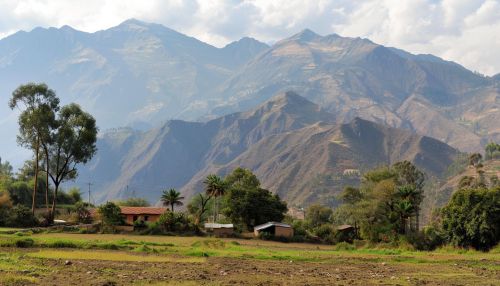Shining Path
History
The Shining Path (Sendero Luminoso) is a Maoist guerrilla insurgent organization in Peru. Founded in 1980 by Abimael Guzmán, a former philosophy professor, the group sought to overthrow the Peruvian government and establish a communist state. The Shining Path's ideology is rooted in Marxism-Leninism-Maoism, with a particular emphasis on the teachings of Mao Zedong. The group gained notoriety for its brutal tactics, including assassinations, bombings, and massacres.
Origins and Ideology
The Shining Path emerged from the Communist Party of Peru (PCP), which split into various factions in the 1960s and 1970s. Guzmán, influenced by Maoist thought, believed that a peasant-led revolution was the path to achieving a communist society in Peru. The group's ideology emphasized the need for a protracted people's war, a concept derived from Mao's strategies during the Chinese Civil War. This approach involved mobilizing the rural peasantry to encircle and eventually capture urban centers.


Early Activities
The Shining Path officially launched its armed struggle on May 17, 1980, by burning ballot boxes in the town of Chuschi, Ayacucho, to disrupt the national elections. This act marked the beginning of a violent campaign against the Peruvian state and its institutions. The group quickly expanded its operations, targeting government officials, military personnel, and civilians perceived as collaborators.
Expansion and Peak
By the mid-1980s, the Shining Path had established a significant presence in the Andean highlands, particularly in the Ayacucho region. The group's influence extended to other rural areas, where it implemented a parallel government structure, known as the "People's Committees." These committees enforced the group's strict ideological doctrine and administered justice through "popular trials."
The Shining Path's tactics included guerrilla warfare, sabotage, and terrorism. The group carried out high-profile attacks, such as the 1983 Lucanamarca massacre, where 69 villagers were killed. The Shining Path also targeted infrastructure, including power lines and bridges, to disrupt the economy and create a climate of fear.
Leadership and Structure
The Shining Path was highly centralized, with Guzmán, known by his nom de guerre "Chairman Gonzalo," serving as the undisputed leader. The group's organizational structure was hierarchical, with a Central Committee at the top, followed by regional and local committees. The Shining Path's military wing, the People's Guerrilla Army, was responsible for carrying out armed operations.
Abimael Guzmán
Guzmán's leadership was characterized by a cult of personality, with his writings and speeches forming the basis of the group's ideology. He advocated for a "militarized" party, where political and military activities were closely intertwined. Guzmán's strategic vision involved creating "strategic equilibrium" by weakening the state through sustained guerrilla warfare, eventually leading to a decisive victory.
Government Response
The Peruvian government's response to the Shining Path was initially slow and ineffective. However, as the group's activities intensified, the government declared a state of emergency in affected regions and deployed the military to combat the insurgency. The conflict led to widespread human rights abuses, including extrajudicial killings, torture, and forced disappearances, committed by both the Shining Path and state forces.
Counterinsurgency Efforts
In the late 1980s and early 1990s, the government intensified its counterinsurgency efforts, adopting a strategy of "low-intensity warfare." This approach involved the use of specialized military units, intelligence operations, and civic action programs to win the "hearts and minds" of the rural population. The establishment of rondas campesinas (peasant patrols) played a crucial role in countering the Shining Path's influence in rural areas.
Decline and Legacy
The capture of Abimael Guzmán in September 1992 marked a turning point in the conflict. Guzmán's arrest, along with the capture of other key leaders, dealt a significant blow to the Shining Path's operational capabilities. The group's activities declined sharply, although remnants continued to operate in isolated areas.
Post-Guzmán Era
After Guzmán's capture, the Shining Path splintered into factions, with some members advocating for peace negotiations while others continued armed struggle. The group experienced further setbacks in the late 1990s and early 2000s, as the government maintained pressure through military and police operations. Today, the Shining Path is a shadow of its former self, with limited influence and operational capacity.
Impact on Peruvian Society
The Shining Path insurgency had a profound impact on Peruvian society, resulting in an estimated 69,000 deaths and widespread displacement. The conflict left deep scars, particularly in rural communities that bore the brunt of the violence. The Truth and Reconciliation Commission (TRC), established in 2001, documented the human rights abuses committed by both the Shining Path and state forces, providing a comprehensive account of the conflict's impact.
Human Rights Violations
The TRC's final report highlighted the extensive human rights violations committed during the conflict. The Shining Path was responsible for the majority of civilian deaths, often targeting indigenous communities and perceived "class enemies." The report also documented abuses by state forces, including massacres, torture, and arbitrary detentions.
Socioeconomic Consequences
The insurgency had significant socioeconomic consequences, disrupting agricultural production, displacing communities, and exacerbating poverty in affected regions. The destruction of infrastructure and the climate of fear hindered economic development, particularly in the Andean highlands. The conflict also strained the state's resources, diverting funds from social programs to military expenditures.
Ideological Influence
The Shining Path's ideology, rooted in Marxism-Leninism-Maoism, continues to influence leftist movements in Peru and beyond. While the group's violent tactics have been widely condemned, its critique of social and economic inequalities resonates with some sectors of society. The Shining Path's legacy is a contentious topic in Peruvian politics, with debates over the causes and consequences of the conflict continuing to shape public discourse.
Contemporary Leftist Movements
Contemporary leftist movements in Peru, such as the Movimiento por Amnistía y Derechos Fundamentales (MOVADEF), have sought to rehabilitate the image of the Shining Path and advocate for the release of imprisoned members. These movements face significant opposition from the government and civil society, reflecting the ongoing polarization over the Shining Path's legacy.
